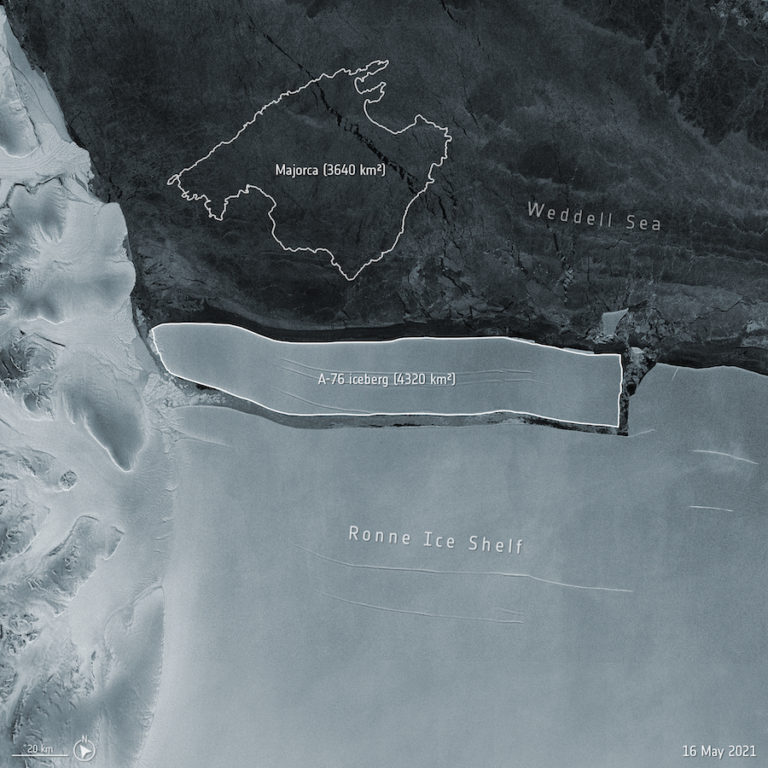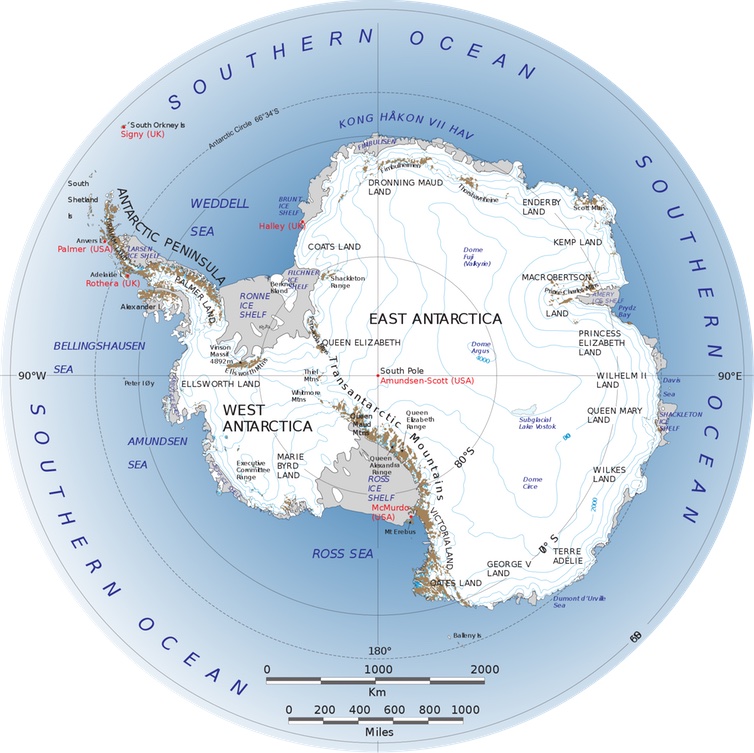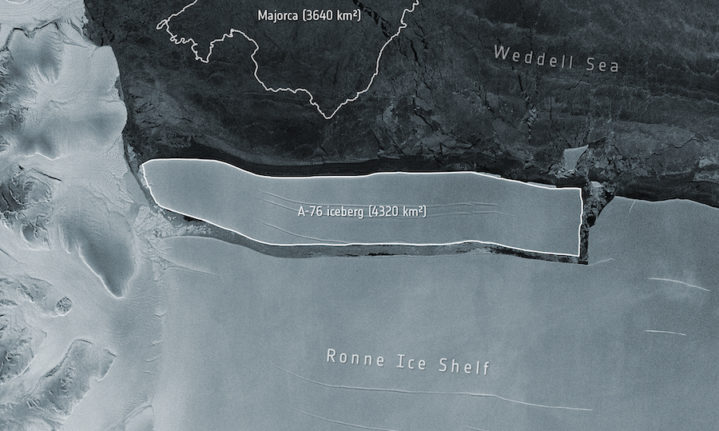An enormous iceberg has calved from Antarctica’s Ronne Ice Shelf. Measuring around 4320 sq km, the giant is a quarter of the size of Kruger National Park.

A-76, measures around 4,320 square kilometres in size — bigger than the Spanish island of Majorca.(European Space Agency)
Originally spotted by the British Antarctic Survey, it was confirmed in satellite images captured by Copernicus Sentinel-1 mission. The iceberg measures around 170 km in length and 25 km in width and is floating in the Weddell Sea, says the European Space Agency.
Dubbed A-76, ‘the enormity of the berg makes it the largest in the world (currently), snatching first place from the A-23A iceberg (approximately 3880 sq km in size) which is also located in the Weddell Sea,’ the agency said. Icebergs are named from the Antarctic quadrant in which they were originally sighted, then a sequential number, then, if the iceberg breaks, a sequential letter.
The largest iceberg ever reliably documented was approximately 31 000 sq km (larger than Lesotho) spotted west of Scott Island in the Southern Ocean by USS Glacier on 12 November 1956. According to reports, A-76 is the third largest iceberg ever recorded.
The Ronne Ice Shelf is one several enormous floating sheets of ice connected to the continent’s landmass. Periodic calving of large chunks of those shelves is part of a natural cycle.





















